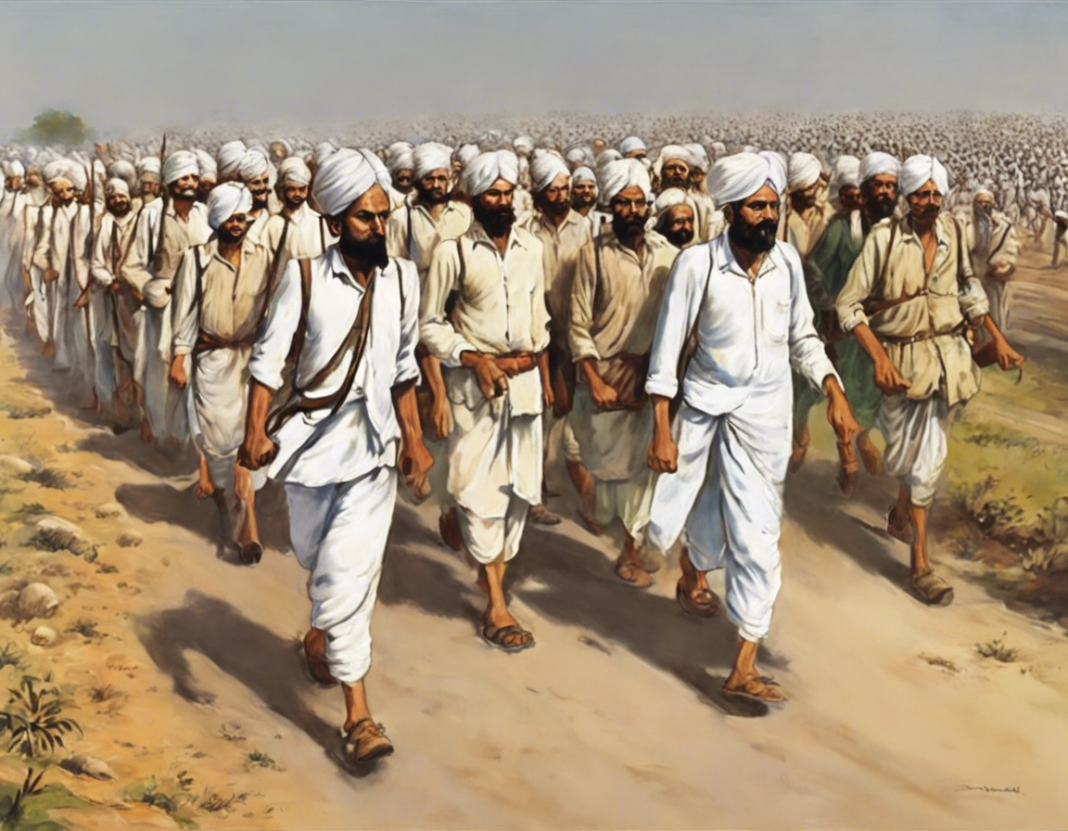Introduction
The Dandi March, also known as the Salt Satyagraha, was a pivotal event in the Indian independence movement led by Mahatma Gandhi. This nonviolent protest against the British salt monopoly played a crucial role in galvanizing the Indian masses and garnering international attention towards the injustices of colonial rule. In this article, we delve deep into the significance, impact, and legacy of the Dandi March in shaping the course of India’s struggle for freedom.
Origins of the Dandi March
In 1930, the British government imposed a salt tax that heavily burdened the Indian populace, especially the poor. Gandhi, who believed in the power of nonviolent civil disobedience, saw the salt tax as a symbol of British exploitation and an opportunity to mobilize Indians against colonial rule. On March 12, 1930, he embarked on a 240-mile march from Sabarmati Ashram to the coastal village of Dandi in Gujarat, along with 78 satyagrahis (nonviolent protesters).
The Journey
The Dandi March lasted for 24 days, with Gandhi making several stops along the way to deliver speeches, interact with locals, and recruit more followers to the cause. Despite facing harassment and arrest threats from the British authorities, the marchers remained steadfast in their commitment to nonviolence and civil disobedience. On April 6, 1930, Gandhi reached Dandi and symbolically violated the salt laws by picking up a handful of salt from the seashore, thus sparking a nationwide civil disobedience movement.
Impact of the Dandi March
The Dandi March had far-reaching consequences that reverberated across India and the world:
-
Mobilization of the Masses: The Dandi March mobilized millions of Indians from diverse backgrounds, uniting them in their quest for independence. It inspired similar acts of civil disobedience in other parts of the country, leading to widespread agitation against British colonial rule.
-
International Attention: The peaceful nature of the Dandi March and the brutal response of the British authorities drew international attention to the plight of Indians under colonial rule. The global press covered the event extensively, highlighting the moral authority of the Indian independence movement.
-
Shift in Strategy: The success of the Dandi March demonstrated the efficacy of nonviolent resistance as a powerful tool against oppression. Gandhi’s philosophy of ahimsa (nonviolence) and satyagraha (truth force) gained broader acceptance and became central to the Indian freedom struggle.
-
Negotiations with the British: The Dandi March forced the British government to engage with Indian leaders and led to the Round Table Conferences aimed at addressing Indian demands for self-governance. While the immediate impact was limited, it set the stage for future negotiations that eventually led to independence in 1947.
Legacy of the Dandi March
The Dandi March left an indelible mark on India’s struggle for independence and continues to inspire movements for justice and equality around the world:
-
Symbol of Resistance: The Dandi March remains a symbol of peaceful resistance against injustice and oppression. It reminds us of the power of ordinary people coming together to challenge entrenched systems of power.
-
Empowerment of the Marginalized: The Dandi March empowered marginalized communities, including women, lower castes, and peasants, giving them a platform to voice their grievances and assert their rights.
-
Continued Relevance: The principles of nonviolent protest and civil disobedience espoused during the Dandi March continue to resonate in contemporary struggles for social change and human rights.
-
Inspiration for Future Generations: The legacy of the Dandi March inspires future generations to stand up against injustice, inequality, and tyranny, showing that collective action rooted in truth and nonviolence can bring about transformative change.
Frequently Asked Questions (FAQs)
-
Why was the Dandi March called the Salt Satyagraha?
The Dandi March was popularly known as the Salt Satyagraha because it was a nonviolent protest against the salt tax imposed by the British colonial government. -
How did the Dandi March impact the Indian independence movement?
The Dandi March mobilized the masses, garnered international attention, shifted the strategy towards nonviolent resistance, and paved the way for negotiations with the British. -
What role did Mahatma Gandhi play in the Dandi March?
Mahatma Gandhi led the Dandi March as a form of peaceful protest against British colonial rule, demonstrating the power of nonviolent resistance in achieving social change. -
What was the significance of Gandhi’s symbolic act of picking up salt at Dandi?
Gandhi’s act of picking up salt at Dandi symbolized the defiance of unjust laws and galvanized Indians to challenge British authority through civil disobedience. -
How did the Dandi March impact the international community?
The Dandi March drew international attention to the Indian independence movement, showcasing the power of nonviolent resistance as a tool for social and political change.
In conclusion, the Dandi March stands as a testament to the indomitable spirit of those who seek freedom, justice, and equality. It symbolizes the transformative power of nonviolence and civil disobedience in dismantling oppressive systems and inspiring movements for social change. Gandhi’s footsteps on the sands of Dandi continue to echo through history, reminding us of our capacity to resist, to endure, and to strive for a world built on the pillars of truth and justice.






